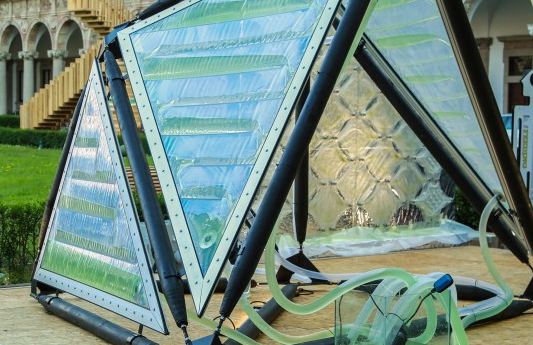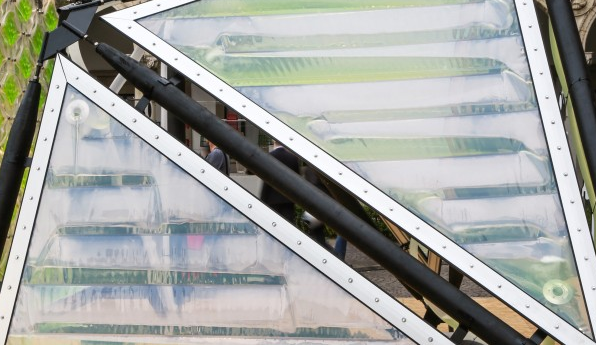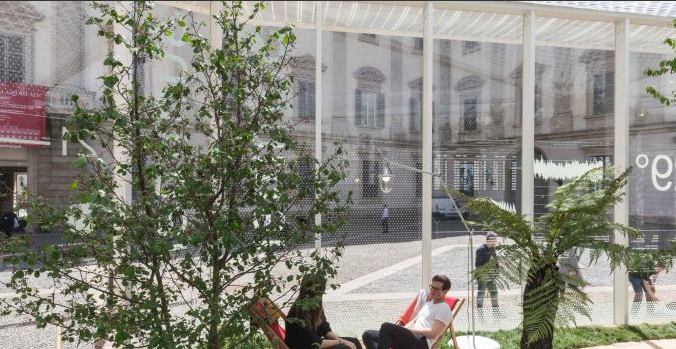Designers as Mutagens
Carlo Ratti discusses his forward-thinking designs, which could influence the superyacht sector…
Carlo Ratti doesn't look like to look back. “My favourite projects are the ones that explore the potential of the present,” he remarks. For the founder of his eponymous studio Carlo Ratti Associati and professor at Massachusetts Institute of Technology’s (MIT) SENSEable City Laboratory, all designs must anticipate the experiences of those interacting with the project. “I think that every design should explore a possible future,” he says. “I like Herbert Simon’s definition: ‘the natural sciences are concerned with how things are. Design, on the other hand, is concerned with how things ought to be’.”
Two key concepts are evident in Ratti’s many projects: human-centric experiences and open-source designs. For Ratti, the role of the designer is to continually see their work from an innovator’s perspective, shifting and challenging previously held ideas in order to create truly organic designs. “I like to see designers as mutagens: agents that produce mutations who accelerate the transformation of the present into how it ‘ought to be’,” he says.
Interestingly, despite Ratti’s future-thinking designs, he doesn’t see technological innovation as pivotal to his projects, focusing instead on those who will experience them. “Technology has always been central to design. However, for us, technology should always be a tool and not the aim of design – we always focus on the user.” These human-centric projects are evident in Ratti’s work with the SENSEable City Laboratory.
"Project Treepedia", for example, is an interactive website dedicated to measuring and comparing greenery within cities. Inhabitants can track, ‘tag’ and request more trees to be planted in their environment. This open-sourcing of information, where anyone can contribute to the project, is one that could prove to be of merit in the superyacht industry. “We are progressing in the direction of a collaborative paradigm, in which citizens participate in an open-source way,” explains Ratti. This raises the question, is superyacht designers were to pool ideas and continually feed into a communal bank of projects, would this better encourage innovative and interactive concepts to come to fruition?
Ratti’s installations across the world echo how human interaction is imperative to modern design. "The Digital Water Pavilion", unveiled at the Zaragoza World Expo in 2008, saw curtains of water droplets that could be digitally controlled and manipulated by an audience. “Water is interesting because it is a reconfigurable material, and it somehow allows us to develop adaptive, ‘fluid’ designs,” he explains.
The also theme of sustainability is often present in Ratti's work. "Algaetecture", a project unveiled during Milan Design Week 2014 used micro-algae photosynthesis to produce a similar amount of oxygen as four hectares of woodland. The newly unveiled "La Natura dell’Abitare” (“Living Nature") is a garden pavilion where all four seasons coexist simultaneously, a result of a climate control system managing the energy produced. As superyacht designs are slowly embracing eco-conscious designs, these cost-effective and natural methods to offset carbon emissions could be viable solutions to have on board.
When commenting on the world of superyacht design, Ratti finds that guests on board are often detached from their environment and therefore do not fully participate in their surroundings. “I think that sometimes, superyachts lose connection with the elements – air, water, earth and wind. One of the aims of our work is to imagine architecture that adapts to human need, rather than the other way around – a living, tailored space that is moulded to its inhabitants’ needs, characters and desires.”
Would Ratti follow the likes of Philippe Starck and Zaha Hadid and delve into the world of superyachts? “Absolutely! I would start with water and try to make the elements central to the boat experience,” reveals Ratti, ensuring an experience-focused design, a move that the market could adopt to attract a new generation of owners. “I think we might see new designs that will allow a more direct relationship with water and the natural context – isn’t that the ultimate reason why we sail? An amazing journey immersed in the gusts of wind, water and sensuality!”
Sustainability and forward-thinking designs will form a core part of the programme at The Superyacht Design Forum, held this year from 26 - 27 June at Design Centre, Chelsea Harbour. Click here to find out more.
Images copyright Carlo Ratti Associati (First two images: Algaetecture. Final image: "La Natura dell’Abitare”) A version of this article originally appeared in The Superyacht Report.
Profile links
NEW: Sign up for SuperyachtNewsweek!
Get the latest weekly news, in-depth reports, intelligence, and strategic insights, delivered directly from The Superyacht Group's editors and market analysts.
Stay at the forefront of the superyacht industry with SuperyachtNewsweek
Click here to become part of The Superyacht Group community, and join us in our mission to make this industry accessible to all, and prosperous for the long-term. We are offering access to the superyacht industry’s most comprehensive and longstanding archive of business-critical information, as well as a comprehensive, real-time superyacht fleet database, for just £10 per month, because we are One Industry with One Mission. Sign up here.
NEW: Sign up for
SuperyachtNewsweek!
Get the latest weekly news, in-depth reports, intelligence, and strategic insights, delivered directly from The Superyacht Group's editors and market analysts.
Stay at the forefront of the superyacht industry with SuperyachtNewsweek






